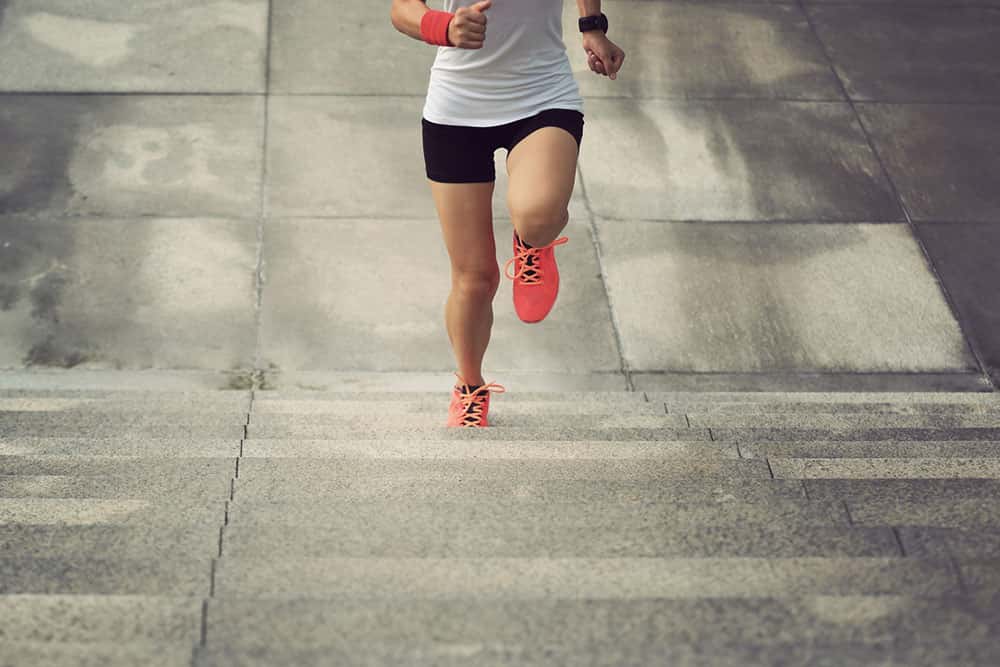How HIIT Changes Our Body

Evan Stevens
Researchers looked at how HIIT (high intensity interval training) changed glucose metabolism in diabetic mice. We have known for a long time that exercise can be used to improve, treat, and prevent all manner of metabolic disease outside of actually curing the disease and the changes are independent of dietary factors. However, there is much debate as to what kind of exercise is best to help mitigate the problems associated with metabolic disease; continuous, endurance aerobic efforts, or short, intense periods of hard effort.
While there has been a lot done to promote longer periods of aerobic work for health, it has only been recently that we’ve seen more studies focus on shorter, more intense sessions. One of the main issues with long, continuous exercises is retention; people get bored and the perceived effort tends to be higher than shorter, more intense exercise. As well, people don’t seem to want to commit an hour or more to longer exercise each day.
So if we can get the same changes to physiology that we see in longer periods of exercise in shorter, more intense periods (increase in mitochondrial biogenesis, increased insulin sensitivity, decreased blood glucose, decreased lipid accumulation and expression), we might be able to offer diabetic people hope that a healthier life is easier to attain. To test if HIT had similar effects to long, continuous bouts of exercise the researchers put mice in a closed system on treadmills and had them do short, but intense bouts of exercise.
So if we can get the same changes to physiology that we see in longer periods of exercise in shorter, more intense periods (increase in mitochondrial biogenesis, increased insulin sensitivity, decreased blood glucose, decreased lipid accumulation and expression), we might be able to offer diabetic people hope that a healthier life is easier to attain. To test if HIT had similar effects to long, continuous bouts of exercise the researchers put mice in a closed system on treadmills and had them do short, but intense bouts of exercise.
The closed systems allowed them to measure the oxygen exchange rate, which when increased means that the mice are preferentially using CHOs as an energy source. The researchers found that oxygen exchange was elevated, and the mice were using CHOs preferentially for energy, meaning that blood glucose and insulin sensitivity must have been raised. To confirm this the researchers looked at tissue samples from the mice and saw that not only was there improved insulin and glucose homeostasis, but the improvements were significantly better than mice that were worked on a continuous aerobic exercise protocol.
Related Article: 90 Seconds A Day Of HIIT Might Be All You Need
As well, HIIT showed slight improvements in total mitochondrial protein amounts when compared to the aerobic group, meaning that the mitochondria were working more and with greater efficiency. However, a closer examination of the mitochondria showed that there was no functional change to the mitochondria themselves; efficiency of the mitochondria was due to the improved insulin signaling and movement of glucose transporters at cellular membranes rather than changes in the mitochondrial fraction.
Related Article: Get Motivated To Exercise: Rats Do It, You Can Too
The second talk of the session expanded on this topic, using obese humans as the subject population. They conducted a very similar study but looked at the effects of exercise over a 24 hour period. What they observed in this obese population was that moderate exercise improved insulin sensitivity, and oxidative stress levels in the blood over the first 90 minutes immediately post exercise. HIIT had literally the opposite, blunting the insulin response and increasing levels of oxidative stress markers in the blood immediately post exercise. However, over a 24 hour period HIIT actually had an overall better effect on these markers than moderate continuous exercise. The impaired glycemic control seemed to disappear after about two hours and in its place were longer lasting effects.
Take away:
HIIT seems to improve insulin sensitivity and parameters of metabolic disease greater than continuous exercise in a longer time scale. Continuous exercise elicits a greater functional change over a longer period of time. Both can be used effectively in conjunction with one another, moderate continuous aerobic exercise as maintenance and low volume high intensity training as a way to bring about lasting changes.
The final talk in the session looked into how HIIT could be used to combat the development of Alzheimer’s Disease and whether it was more effective than a probiotic treatment and if both, used together, would have an additive effect on decreasing the development of Alzheimer’s Disease. The researchers used a mice model of Alzheimer’s Disease for their study, comparing HIIT to Probiotics to Probiotics + HIIT to a control group (untreated).
The researchers observed that when subjected to various cognitive tests that the mice that were in the combined probiotics + HIIT group outperformed mice from the other three groups by a significantly large margin on each of the study days. When looking at the mice brains themselves they saw that the mice brains subjected to training had the least amount of amyloid plaque development in both size and number, independent of the probiotic supplementation (although the combined probiotic and HIIT had the best cognitive performance). They theorized that the probiotics helped the improve lipid metabolism which would prevent the accumulation of lipids (which induces a pro-inflammatory state, a hallmark of Alzheimer’s Disease) and the training improved all parameters of insulin sensitivity (another hallmark of cognitive impairment).
Related Article: Exercise and Alzheimer’s Disease
Take away:
HIIT combined with probiotics may slow the development of Alzheimer’s Disease and cognitive impairment. HIIT alone led to the best outcome in terms of amyloid plaque formation, which may be in part due to increased blood flow to the brain and may provide a more focused approach to treatment and prevention in the future.
You Might Like:

















